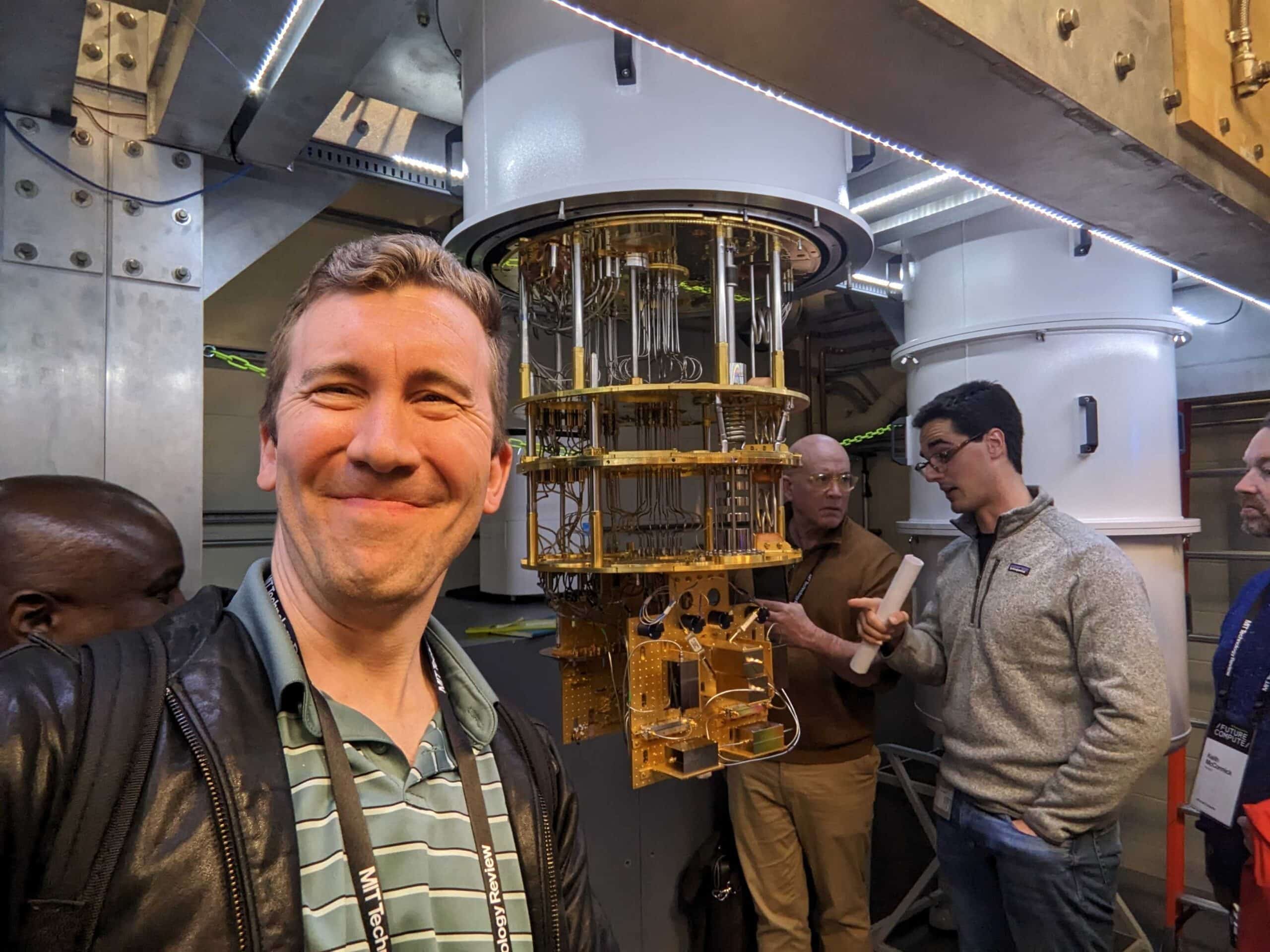What Investors Need to Know About Quantum Computing
7investing CEO Simon Erickson recently toured MIT's legendary quantum computing labs. Here are his important takeaways for investors.

May 5, 2023
I’m up in Boston this week for MIT’s Future Compute and EmTech conferences. The weather’s terrible, but the food is damn good and the conference is excellent.

I like to make it out for industry conferences as often as my schedule will allow. I’ve found that learning about innovation directly from research scientists is quite insightful. And as a 7investing lead advisor, it’s my job to figure out which of these cutting-edge technologies is actually investable — and then find the clever entrepreneurs who have etched out profitable business models that will ultimately lead to 10-baggers for investors.
MIT’s Future Compute conference is incredible, and it alone has already led me to two extremely profitable investments. One was a company who turned around its entire business, fundamentally changing the architecture it used for semiconductor design. It now provides chips to the most demanding customers of the enterprise and cloud datacenter. The other company found an innovative and efficient way to provide cybersecurity protection in an unobtrusive way for developers who liked to create new apps using containers.
Both of those companies are now official 7investing recommendations. You can read about each of them directly here and here, or sign up for 7investing here (as a fellow fan of innovation, I’ll even give you a 65% discount; just use code “future” when placing your order and checking out).
Is Now the Time to Invest in Quantum?
I got a chance to tour MIT’s legendary Center for Quantum Engineering labs earlier this afternoon. Jumping to the chase, here are a few of the most important investing takeaways that I’d like to share:
- Quantum computing is still a very long way from full commercialization. Most likely another 10 years or more. As it has been for the past decade, there are still R&D issues that need solving — like isolating the system from external interference and in error-correction. Even tiny things we take for granted, like radiation emitted from clay in the bricks of buildings or solar flares, need to be monitored and error-corrected to get accurate, useful data.
- Quantum is still very expensive. We’re talking in the range of $100k-$200k per qubit. That means computers that have 100 qubits could cost $10 million or more just for the hardware alone. That doesn’t even include the staff required for running the experiments and measuring the results. It’s still uneconomical for most organizations.
- Quantum will never replace classical computing. It’s only meant to be a fringe case for the absolutely most demanding problems. It is most useful when there are an incredibly large number of inputs and find optimal solutions to well-defined problems; where traditional computing would take hundreds or thousands of years to solve.
- Some use cases will make sense. The most likely use cases will be in drug development (using simulations to model protein structures), materials research (designing optimal alloys/materials for very specific properties), and climate change. The “killer app” has still yet to emerge.
- The business model will be different. Due to the point above, quantum will also not likely follow the same software-as-a-service model that we’ve seen for using GPUs or “XPUs” for specific applications. It’s more likely a very methodically-defined consulting project; which could cost millions of dollars to solve.
- Quantum could turn out to be “The Next AI”. There are several similarities between QC today and Machine Learning in the 1990s. ML then was a fringe, obscure, speculative science that didn’t yet have the necessary computing power nor the large enough data sets to support it at scale. Today, we’re in the golden age of AI and every large enterprise is deploying it. QC could follow a similar path for large organizations who spend hundreds of millions or billions of dollars on R&D.
- There’s no one-size-fits-all approach. There are still many different scientific approaches to QC. MIT tends to favor superconductive quantum; where they design and manufacture their own chips but must run the process in a vacuum and near absolute zero temperatures (10 millikelvin). Other approaches involve ion trapping or the use of optics. The tradeoff is generally between quantum gate speed (faster; but noisier) versus gate fidelity (more stable but slower).
That’s it for Day 1. I’ll be back again tomorrow with my 3 more important takeaways from this year’s conference!

Already a 7investing member? Log in here.

